Here are the facts and figures regarding the chartered A321 aircraft that will intercept the Moon’s shadow just after sunrise on December 4, 2021.
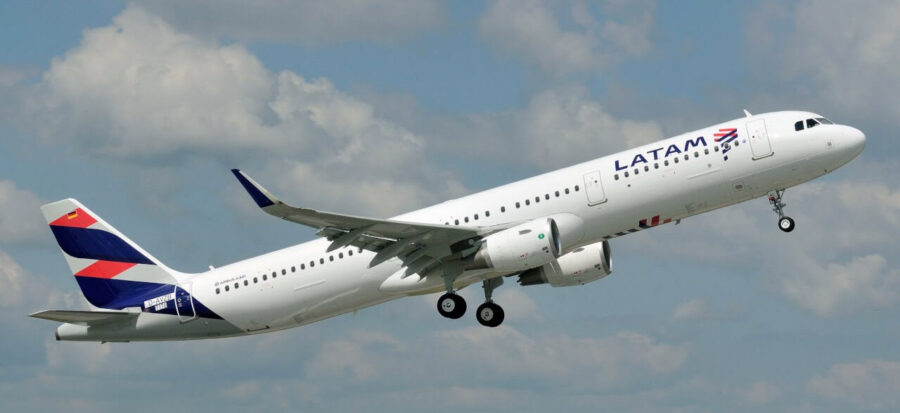
airlinesfleet.com
An airborne intercept of the Moon’s umbral shadow on December 4, 2021, is made possible because the Sun’s low altitude just after sunrise for our planned encounter point due east of Tierra del Fuego at the southern tip of South America. This means that totality can be viewed comfortably through the plane’s windows without resorting to gymnast-like contortions.
Beginning in late 2018, the editors of Sky & Telescope have negotiated with LATAM Airlines to provide a chartered flight into the eclipse path above the South Atlantic Ocean. We have settled on using an Airbus 321-200 aircraft, the workhorse of LATAM’s Chilean fleet. Meanwhile, we collaborated with Dr. Glenn Schneider, the unrivaled master of midair eclipse intercepts, to fine-tune the range of possible eclipse flight paths.
The Eclipse Flight
Our 5½-hour flight plan calls for departure from Punta Arenas at about 12:30 a.m. (local time) on eclipse day. We’ll fly to an intercept track over the Southern Ocean due east of Tierra del Fuego. This 15-minute-long “totality run” will allow us to view the final stages of the partial eclipse prior to 2nd Contact (when the total eclipse begins), all of totality, and the partial phases immediately after 3rd Contact (when the total eclipse ends).
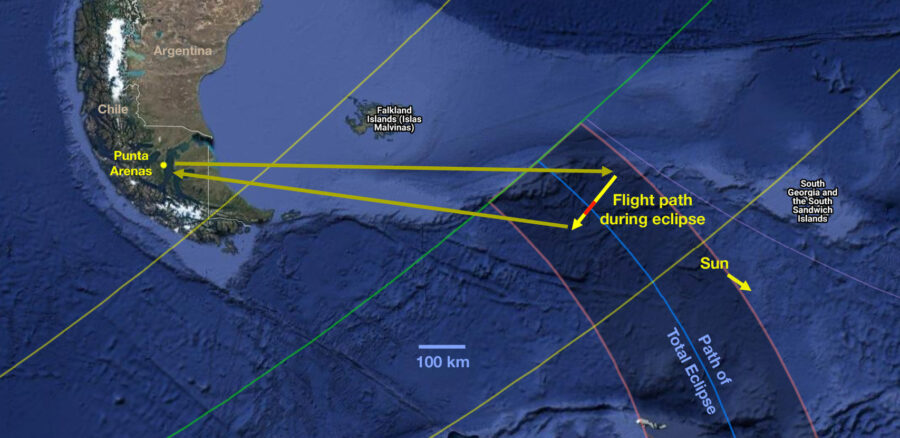
Sky & Telescope; base map: Xavier Jubier
The exact routing and intercept location are tightly scripted due to international regulations that require the plane to be within 60 minutes of a suitable airport (in this case, the Falkland Islands) in case of an emergency. After our departure from Punta Arenas, we will fly eastward for roughly 2½ hours. Then, as the graphic above shows, our plane will assume a heading toward the southwest (the yellow “Flight path during eclipse” line), and we will maintain that direction for 15 minutes. This will position the Sun straight out of the windows on the left (port or ABC) side of the fuselage, perpendicular to our direction of flight, during totality (red line segment above).
In this region during December 4th’s eclipse, the Moon's umbra is just starting its passage across Earth and becomes very elongated as it moves past our planet’s sunrise terminator. It will be racing along with a ground speed of 9½ km/s (about 21,000 mph)! This vastly exceeds our plane’s velocity of ~477 knots (~550 mph). In essence, we’ll position the plane to be overrun by the hypersonic umbral shadow.
According to Dr. Schneider’s calculations, at 7:02:29 Universal Time, our aircraft will be positioned on the centerline at 48° 7.4' west, 54° 11.6' south. We’ll experience 1m 45s of totality with eclipsed Sun 2.2° above the true horizon and 5.7° above apparent horizon, which will be depressed by 3.5° due to the aircraft’s altitude.
The Aircraft
LATAM configures its A321-200 aircraft with an economy-only cabin of 38 rows with six-across seating. The spacing (pitch) of the rows is 29 to 30 inches, which despite being relatively tight by airline standards will still offer enough room for one or two people to have easy access to the window area.
Consequently we are limiting the flight’s capacity to no more than two people per row. In essence, your reservation will entitle you to all the seats in your assigned row — even though the eclipse will only be visible from the windows on the left (port) side of the aircraft. Note: This plane will have no in-seat entertainment system, no power outlets (except for USB), and no WiFi.

LATAM Airlines
An A321-200 has 47 windows on each side of the fuselage, so consequently some rows will have access to two windows to view the eclipsed Sun and some to just one. Moreover, some windows align so closely with the adjacent seat backs (which recline only slightly, if at all) that they won’t be usable for eclipse viewing. The schematic above shows how the windows (colored light blue) and rows line up. Again, we will be observing out the left (port) side of the plane, corresponding to seats designated A-B-C.
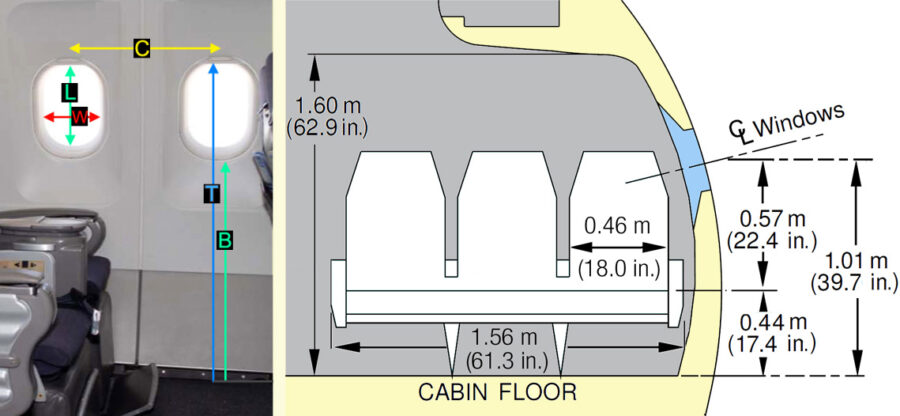
Glenn Schneider; Airbus
Windows are spaced 20.9 inches (53 cm) apart (noted by C in the view above). The windows themselves measure 11.8 (L) by 8.3 (W) inches (30 by 21 cm) with rounded corners and a Plexiglas cabin-side cover. The center of each window is 39.7 inches (101 cm) above the cabin floor, with the top and bottom edges (T, B) positioned 44.9 and 33.9 inches (114 cm and 86 cm) above the floor. Seating measurements are shown at right.
Choosing Your Seat
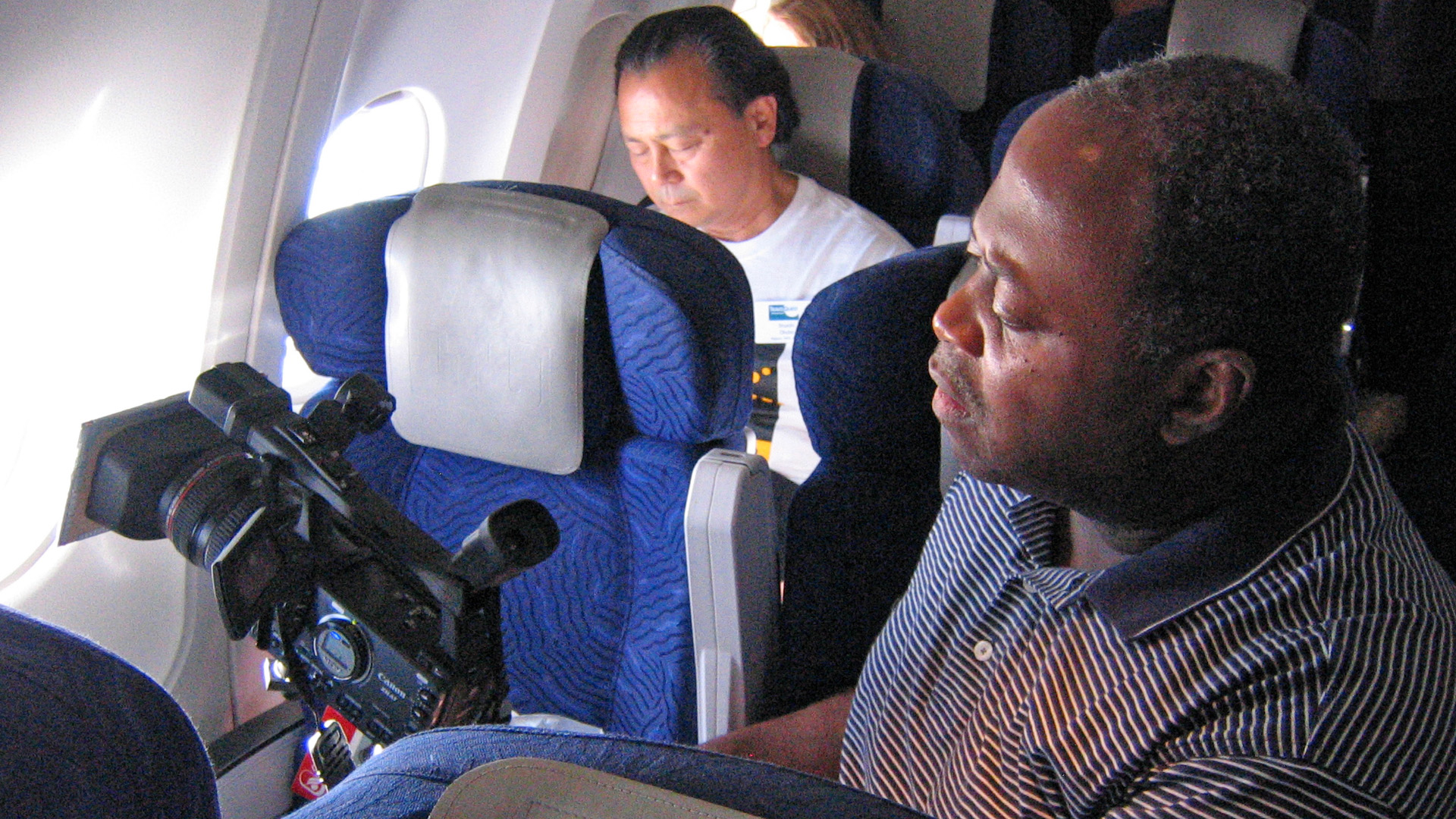
Sky & Telescope / J. Kelly Beatty
In most cases, there won’t be enough floor space to set up a full-size camera tripod. Instead, consider attaching your camera to a compact tripod resting on the seat, a hand-held monopod, or a suction-cup mount (attached to the window) for your camera. Of course, you might prefer to simply enjoy the total eclipse visually, either with your unaided eyes or with binoculars.
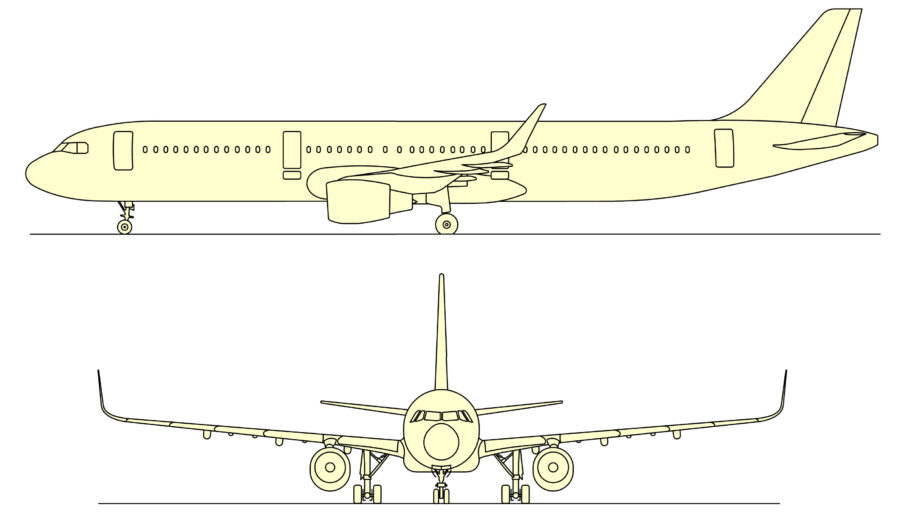
Airbus Industries
Modern aircraft of this type have a near-vertical “sharklet” at the outer tip of each wing. These will interfere with views of the totally eclipsed Sun only for rows 25 to 28, which are not reservable. Those of you in rows over the wings, especially rows 22 to 24, will see the eclipsed Sun above the wing but will will not get a full view of the ground and ocean below the plane. But you’ll still clearly see the Moon’s shadow darkening the sky as it approaches the plane just before totality and recedes in the moments afterward.
The graphic below shows the rows available on this flight. Red tinting means either that the row is not available for eclipse viewing or has been reserved for other passengers. Note that “(P)” or "(SP)" after the row number means it’s a premium row that will cost extra to reserve; “(W)” after the row number means that the plane’s wing will restrict your views of the ground or ocean below you; however, in those rows, you’ll see the eclipsed Sun above the wing and forward of the upturned “sharklet” at the wingtip.
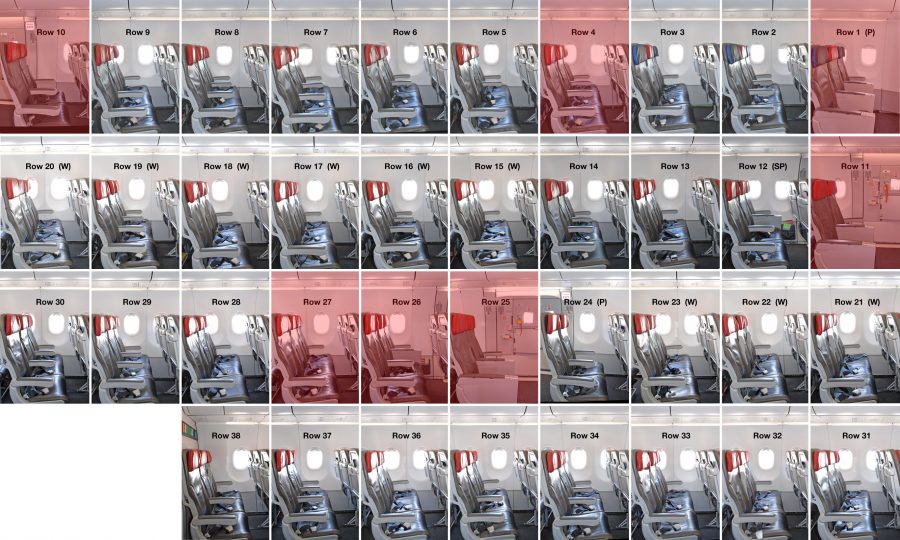
Sky & Telescope / Ricardo Arancibia
You’ll be able to select from among the remaining (untinted) rows after you have completed a reservation and paid your deposit. (You’ll be contacted separately for your choice.) However, please note that your chosen row will not be guaranteed until you’ve paid in full for the flight and ground tour.
| Note: this flight is offered as part of a 5-day sightseeing tour. For details about the tour, click here. But if you're ready to go and want to secure your space on this flight, submit a reservation electronically using this form. |
Time to Start Planning!
Finally, we know that you desire to witness the 2021 total solar eclipse, and we will do our very best to achieve that goal. However, we cannot guarantee that there will be no cloud cover, that the plane will be in the planned position, or that there will not be another reason beyond our control that prevents viewing totality.
But Glenn Schneider has successfully guided more than a dozen aircraft into the Moon's shadow over the years, and Sky & Telescope’s editors themselves have four successful eclipse flights to their credit going back to 2003 (a flight over Antarctica that used a Latam A340 jumbo jet). We have every confidence in our team, and we look forward to letting you gasp in awe at the Sun’s dazzling corona on December 4, 2021.
If you have any questions concerning the aircraft or flight logistics, please contact Kelly Beatty at [email protected].
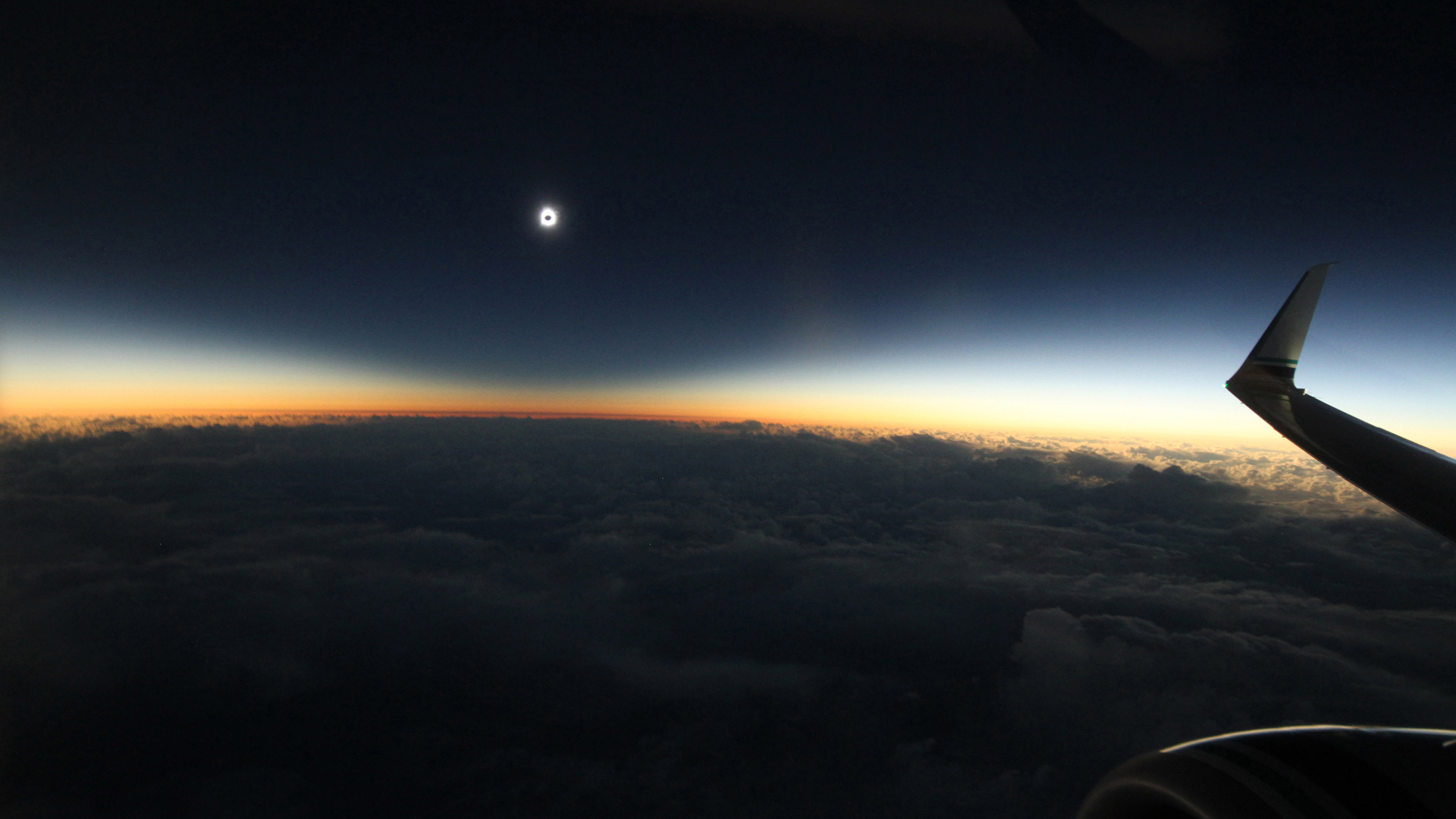
Dan McGlaun / eclipse2024.org
